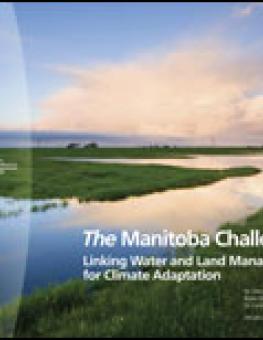
The Manitoba Challenge: Linking Water and Land Management for Climate Adaptation
Ecological watershed management is a key to successful climate adaptation in Manitoba, and will also help improve the state of Lake Winnipeg.
Ecological watershed management is a key to successful climate adaptation in Manitoba, and will also help improve the state of Lake Winnipeg.
Manitoba is a region of high water variability—floods and droughts have always characterized the region. Climate change threatens to make that variability more extreme and may already be happening. At present, over 90 per cent of the available water budget returns to the atmosphere as evaporation; only 8 per cent is available as watershed runoff. As climate change brings more and more variable rainfall, ecological watershed management (for water conservation, groundwater recharge, and flood and drought protection) becomes an ever more important adaptation strategy and has the major co-benefit of also reducing nutrient loads on Lake Winnipeg.
The necessity of climate change adaptation also creates an innovation opportunity—doing things differently and better. In Manitoba, that means integrating water and land management; investing in our watersheds to seize economic, social and environmental benefits such as flood and drought damage reduction and improving the health of Lake Winnipeg.
The Manitoba Challenge: Integrated Water and Land Management for Climate Adaptation, a new study by IISD's Water Innovation Centre, presents the case for technological and institutional innovation for effective ecological watershed management. Key elements of this innovation agenda include governance reform at the water-land interface, re-purposing existing resources, and designing new economic instruments to support watershed management, including ecological goods and services programs in the agricultural sector.
You might also be interested in
IISD Annual Report 2023–2024
While IISD's reputation as a convenor, a trusted thought leader, and a go-to source on key issues within the sustainable development field is stronger than ever, the work happening outside the spotlight is just as valuable.
Building Natural Infrastructure Capacity Across Professions and Skilled Trades in the Canadian Prairies
As the demand for natural infrastructure continues to grow across the Canadian Prairies, it's essential to build more professional capacity in the skilled trades.